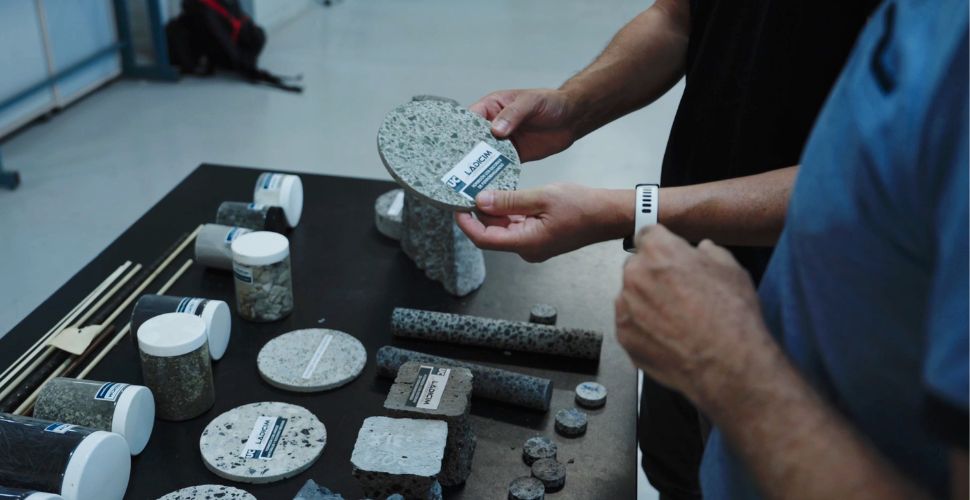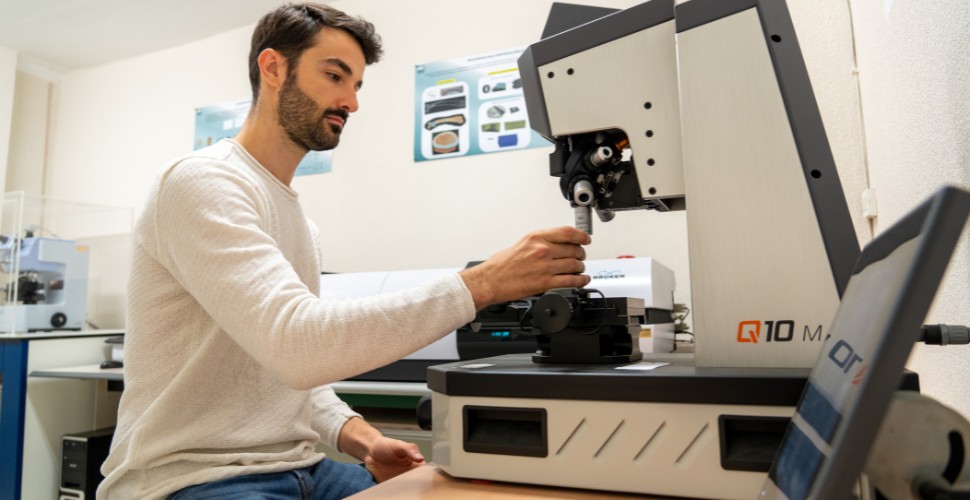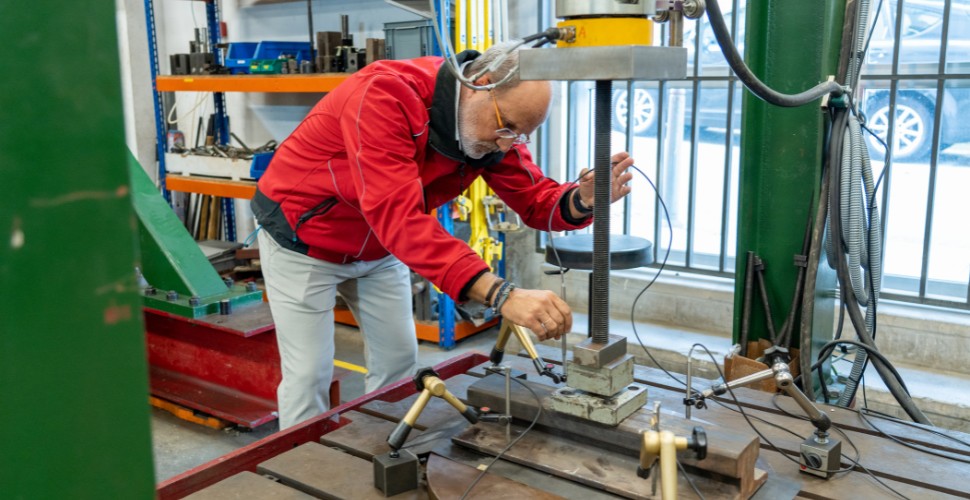LADICIM researches the creation of a recycled concrete with high durability in the marine environment
The SEACOND project proposes the analysis of sustainable innovations such as the use of recycled aggregates, seawater and non-metallic reinforcements to reduce the environmental impact and extend the lifetime of maritime structures
Maritime structures play a crucial role in many economic activities, but they also pose significant environmental challenges. Dikes and breakwaters, docks and jetties, oil platforms, underwater tunnels, coastal defences and bridges are supported by a material such as concrete, whose metallic reinforcements suffer great deterioration in the marine environment, thus reducing the durability of the structures it supports.
LADICIM has launched a project funded by the Ministry of Science and Innovation to study the development of concretes for more durable and environmentally sustainable maritime structures, through the research and use of recycled materials that are more resistant to the marine environment.
The SEACOND project, led by LADICIM researcher Carlos Thomas, represents a novel effort in environmental engineering to address key challenges in the management of concrete waste in marine environments. An interdisciplinary study that not only seeks to mitigate the environmental impact of marine structures, but also to innovate in the use of materials, sustainable construction techniques and marine biodiversity friendly environments.
Reuse of concrete waste
One of SEACOND’s main objectives is to increase the recycling of chloride-contaminated concrete waste in order to reduce its volume, conserve natural resources and reduce greenhouse gas emissions.
The project also addresses other challenges, such as increasing the durability of offshore structures, minimising their environmental impact, reducing potable water consumption in construction and integrating marine biodiversity conservation into the design of structures.
To achieve these varied and ambitious objectives, SEACOND integrates approaches from several disciplines, including Civil Engineering, Chemistry, Marine Biology and Environmental Sciences. The planned methodology ranges from the physical and chemical analysis of contaminated concrete waste, to the implementation of prototype marine structures with innovative designs.
For this, the project has an interdisciplinary team composed of several researchers from LADICIM: Carlos Thomas, principal investigator and expert in durability and mechanical characterisation of eco-concretes; Juan Antonio Polanco, expert in mechanical characterisation and use of ecological concrete structures; Ana Cimentada, expert in structural concrete for foundations and microchemical characterisation of materials; and Pablo Tamayo, head of the mechanical characterisation service.
The project team will also be supported by two international specialists: Jorge de Brito, professor at the University of Lisbon and one of the world’s leading researchers on the use of recycled materials in concrete; and Francisco de Caso y Basalo, researcher at the University of Miami, expert in the use of fibre-reinforced polymers (FRP) in structural concrete.
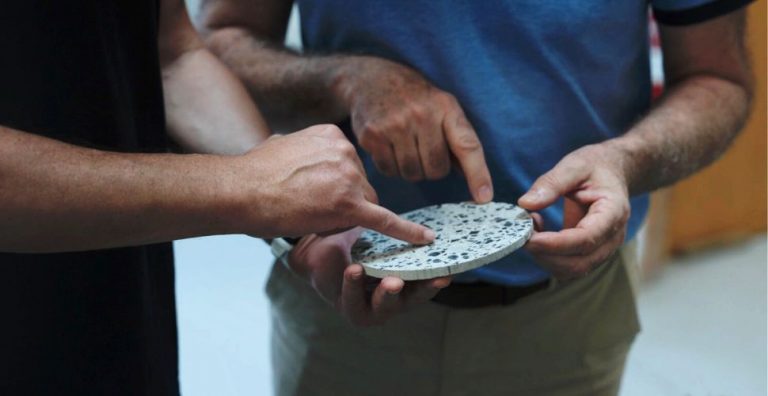
The seawater challenge
The studies developed by LADICIM to date and the first steps of the project suggest that, under certain circumstances, it may be possible to use seawater in the manufacture of concrete, which could offer improvements in maritime construction practice.
Seawater has a well-known negative impact on the durability of concrete, mainly due to its chemical composition, which includes high levels of salts, particularly chlorides and sulphates. These components of seawater interact adversely with concrete and metal reinforcement, which can lead to degradation of the material over time.
Technical innovations and materials
In response to these challenges, the SEACOND project proposes to study significant innovations in materials engineering for marine environments, focusing mainly on several interconnected technical aspects.
Researchers in this project aim to test the regulatory requirements that currently limit the use of chloride-contaminated recycled aggregates in structural concrete due to their propensity to corrode. SEACOND seeks to transform what was previously considered a waste into a valuable resource through innovative solutions in the reuse of these materials.
One of the key innovations of the project is the study of the effect of incorporating non-metallic reinforcements in concrete, replacing traditional metallic ones, on the functionality required of marine structures. This substitution is crucial as it directly addresses the problem of chloride-induced corrosion and, in turn, allows for greater flexibility in concrete formulation. As a consequence of this change, there is the possibility of reducing the thickness of the coating and the amount and types of cement required in the concrete, which has substantial implications in terms of sustainability and reduction of the carbon footprint.
Finally, the project also proposes to analyse an ecological approach to the design of maritime structures, seeking to move away from traditional models based on straight lines, to promote the creation of irregular structures that encourage marine biodiversity while maintaining their functionality.
Overall, the project aims to reinforce LADICIM’s position at the forefront of materials engineering for maritime construction, fusing innovations in materials chemistry, structural engineering and environmental sustainability. A holistic approach that not only solves complex technical challenges, but also aligns with the goals of environmental protection and long-term sustainability.
The assessment and monitoring of the long-term durability of the structures developed in the SEACOND project will be carried out through a set of meticulous and technically advanced procedures involving the continuous monitoring of the evolution of a pilot underwater, in tidal race and splash zone, for at least one year.
This monitoring will assess the proper performance of the structure, its mechanical performance and durability, as well as the proliferation of biodiversity on its surface. The data collected will include information on stress states, deformation and ageing of the structures produced, which will also be validated by a Finite Element Model (FEM).
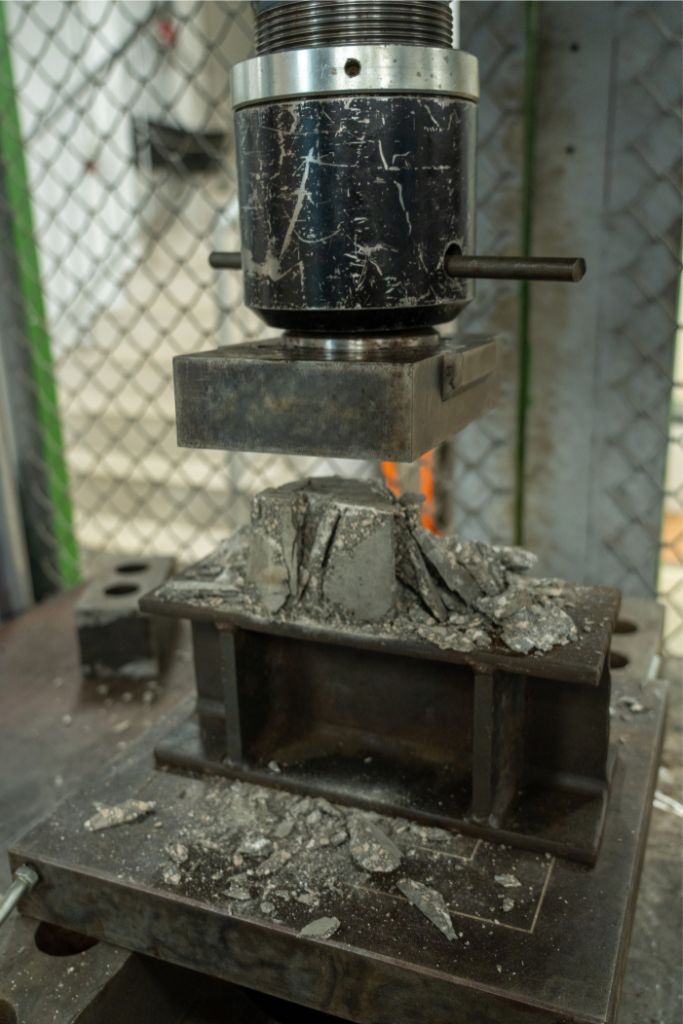
Knowledge transfer
In the SEACOND project, LADICIM will involve a number of organisations and companies, each bringing specific expertise and resources to the development and success of the project.
This collaboration will bring a diversity of knowledge, experience and resources essential to address the multifaceted challenges of the SEACOND project, from innovation in building materials to environmental impact assessment and practical implementation of the developed solutions.
In conclusion, the SEACOND project, led by LADICIM and supported by an interdisciplinary team of experts and collaborators from various organisations, addresses with creativity and technical rigour the challenges presented by maritime structures, both in terms of durability and functionality as well as environmental impact. Through the innovative use of recycled concrete, the exploration of non-metallic reinforcements and the possible incorporation of seawater in the manufacture of the concrete, this project promises not only to extend the service life of maritime structures, but also to reduce their ecological footprint.
PROJECT REFERENCE: PID2022-139258OA-I00 TITLE: NEW, MORE DURABLE MARITIME STRUCTURES WITH REDUCED ENVIRONMENTAL IMPACT BY INVESTIGATING SUSTAINABLE CONCRETES REINFORCED WITH NON-METALLIC ELEMENTS.



